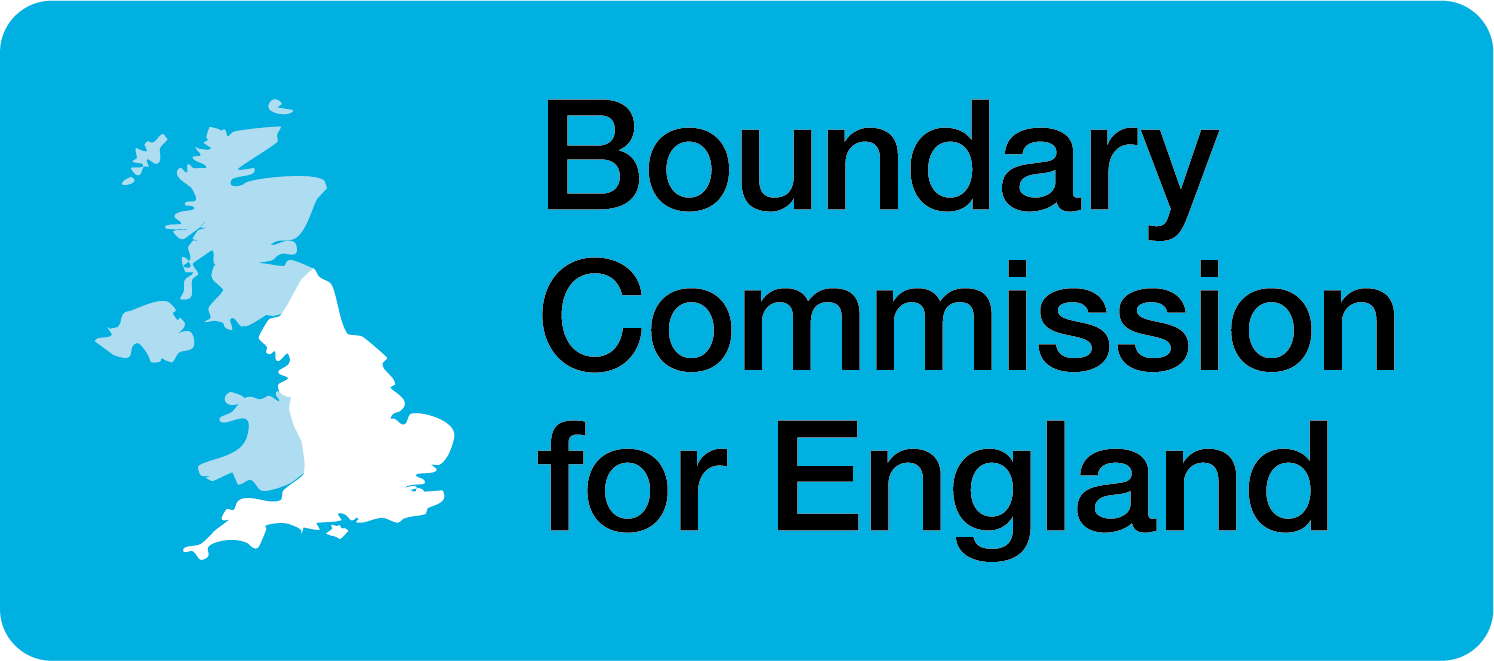Summary
Who we are and what we do – ‘The 2023 Review’1
1 Further details about the BCE and 2023 Review are published on our website: https://boundarycommissionforengland.independent.gov.uk/
The Boundary Commission for England (BCE) is an independent and impartial non-departmental public body, which is responsible for periodically reviewing Parliamentary constituency boundaries in England.
We are currently conducting a review on the basis of legal rules most recently updated by Parliament in 2020, which will conclude with a final report and recommendations from us by 1 July 2023. The rules require there to still be 650 constituencies across the UK, but more equally distributed across the four parts of the UK, which will see the number of constituencies in England increase to 543. Each (apart from five ‘protected’ constituencies) must also contain a number of electors that is no smaller than 69,724 and no larger than 77,062 (as at the fixed date of 2 March 2020).
We published our initial proposals for the new Parliamentary constituency boundaries in England on 8 June 2021 and there have been two rounds of statutory consultation relating to those to which we received over 45,000 responses. We have considered all of the comments received and taken them into account in developing our revised proposals, which we are now publishing for final consultation. For each region, a full report sets out a summary of the responses received to previous consultation on our initial proposals, our analysis of those, and the conclusions we have reached as to how the proposals should be revised as a result. The Appendix to each report contains details of the composition of each constituency we are now proposing, and maps to illustrate these can be viewed on our website or in hard copy at a local place of deposit.2
Back to topWhat are the revised proposals for the London region?
We have revised the composition of 43 of the 75 constituencies we proposed in June 2021, and maintained our initial proposals for the remainder. We have revised the name of 32 of our initially proposed constituencies. Our revised proposals would leave three existing constituencies in the London region wholly unchanged, and seven unchanged except to realign constituency boundaries with local government ward boundaries.3
As it is not always possible to allocate whole numbers of constituencies to individual London boroughs, we sometimes group these into sub-regions, meaning some constituencies cross borough boundaries. After consideration of the responses to the sub-regions in our initial proposals, our revised proposals are based on amended sub-regions, as follows: North East London4 (allocated nine constituencies); Newham and Tower Hamlets (allocated five constituencies); North Central London5 (allocated 14 constituencies); North West London6 (allocated 18 constituencies); South West London7 (allocated nine constituencies); South Central London8 (allocated 12 constituencies); and South East London9 (allocated eight constituencies). 27 constituencies would cross London borough boundaries (four fewer than our initial proposals): none would contain parts of more than two London boroughs.
In North East London, we propose to split three wards in the borough of Havering, rather than one as in the initial proposals. We propose no revisions to any of the five initially proposed constituencies in the Newham and Tower Hamlets sub-region. We have divided our North Central and North West London sub-region into two smaller sub-regions, respecting the A5 road as a geographical boundary. As a result, the number of borough boundary crossings in these parts of London would reduce from 18 in the initial proposals to 14. We propose some substantial revisions to constituencies in the boroughs of Barnet, Brent, Camden, the City of London, Enfield, Haringey, Kensington and Chelsea, and Westminster, in particular. Our revisions would allow one further existing constituency – Islington North – to remain wholly unchanged.
We have revised the composition of all 16 initially proposed constituencies in the boroughs of Croydon, Kingston upon Thames, Lambeth, Lewisham, Merton, Richmond upon Thames (south), and Southwark. We have retained the initial proposals for Sutton and Wandsworth. We propose one ward split in the borough of Croydon, although in a different ward to that proposed initially. In South East London, we have revised the composition of two of the initially proposed constituencies in the borough of Bromley, and split a ward in the south of the borough.
Back to topHow to have your say
We are consulting on our revised proposals for a four-week period, from 8 November 2022 to 5 December 2022. We encourage everyone to use this final opportunity to contribute to the design of the new constituencies – the more views we hear, the more informed our decisions will be when we make our final recommendations and report to Parliament. Our consultation portal at www.bcereviews.org.uk has more information about our revised proposals and how to give us your views. You can also follow us on Twitter @BCEReviews or at facebook.com/BCEReviews.
Back to top2 A list of places of deposit is published on our website (as above).
3 Where the Order to make such wards was made by 1 December 2020.
4 Barking and Dagenham, Havering, Redbridge, and Waltham Forest.
5 Barnet, Camden, Enfield, Hackney, Haringey, and Islington.
6 Brent, the City of London, Ealing, Hammersmith and Fulham, Harrow, Hillingdon, Hounslow, Kensington and Chelsea, Richmond upon Thames (north of the River Thames), and Westminster.
7 Kingston upon Thames, Merton, Richmond upon Thames (south of the River Thames), Sutton, and Wandsworth.
8 Croydon, Lambeth, Lewisham, and Southwark.
9 Bexley, Bromley, and Greenwich.
